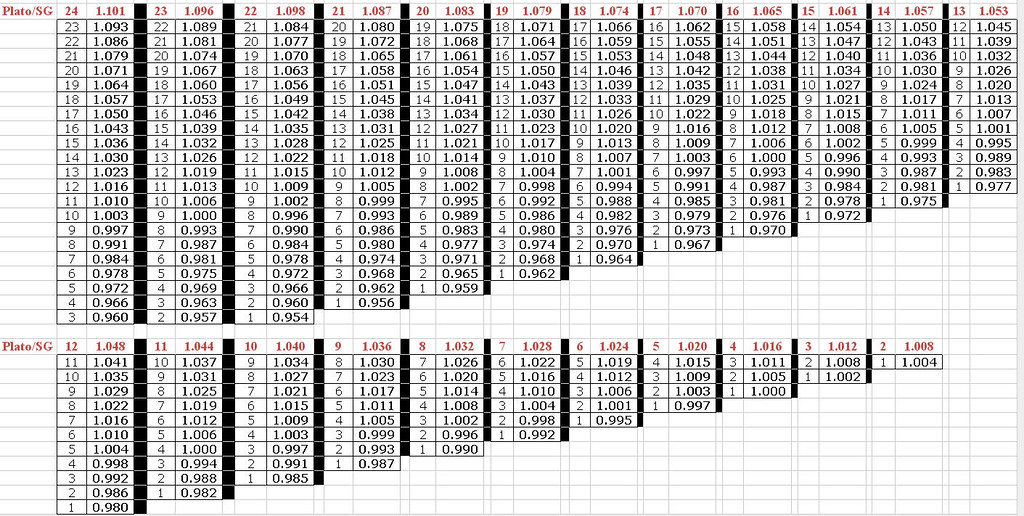Using Brix/Plato to determine Specific Gravity
Posted: Sat Jul 10, 2010 1:30 am
Using Brix/Plato to determine Specific Gravity
Using a Refractometer to determine the amount of dissolved sugar in your wort is very easy, fast and requires only drops of sample. Most refractometers have a built in Automatic Temperature Control (ATC) which will automatically adjust the reading for the temperature of the liquid you are measuring. Readings are given in Brix or degrees Plato (used interchangeably).
The downside to this way of measuring the dissolved sugar in your wort is two fold:
1. The conversion from Brix/Plato to Specific Gravity is not linear. A quick conversion factor of 4 can be used to get a ballpark conversion (10 Brix/Plato x 4 = 1.040), but this craps out around 16 Brix/Plato and gets less accurate the higher the reading.
2. This measurement is based on the refraction (bending) of light of a specific wavelength. As alcohol is formed, it dissolves in the wort and will affect how light is bent. The more alcohol, the greater the affect.
So how can you use your refractometer once fermentation has stated and use only drops of samples to determine if you have hit your final gravity?
There is a big nasty hair formula used to account for non-linearity of the Brix/Plato scale to specific gravity and theoretical alcohol production…The good folks at MoreBeer have put this in a Excel spreadsheet to run this calculation.
http://morebeer.com/learn_vids/vids_refract
What I did was run all the numbers from 24 to 2 Brix/Plato and put the data in one chart for easy reference. All you need to do is look up your initial wort reading, go down the table to find out what your specific gravity is during fermentation readings. Your refractometer MUST have an ATC in order to use this table and you must have your initial wort reading.
http://spreadsheets.google.com/ccc?key= ... y=CNmGqYUN

Jason
Using a Refractometer to determine the amount of dissolved sugar in your wort is very easy, fast and requires only drops of sample. Most refractometers have a built in Automatic Temperature Control (ATC) which will automatically adjust the reading for the temperature of the liquid you are measuring. Readings are given in Brix or degrees Plato (used interchangeably).
The downside to this way of measuring the dissolved sugar in your wort is two fold:
1. The conversion from Brix/Plato to Specific Gravity is not linear. A quick conversion factor of 4 can be used to get a ballpark conversion (10 Brix/Plato x 4 = 1.040), but this craps out around 16 Brix/Plato and gets less accurate the higher the reading.
2. This measurement is based on the refraction (bending) of light of a specific wavelength. As alcohol is formed, it dissolves in the wort and will affect how light is bent. The more alcohol, the greater the affect.
So how can you use your refractometer once fermentation has stated and use only drops of samples to determine if you have hit your final gravity?
There is a big nasty hair formula used to account for non-linearity of the Brix/Plato scale to specific gravity and theoretical alcohol production…The good folks at MoreBeer have put this in a Excel spreadsheet to run this calculation.
http://morebeer.com/learn_vids/vids_refract
What I did was run all the numbers from 24 to 2 Brix/Plato and put the data in one chart for easy reference. All you need to do is look up your initial wort reading, go down the table to find out what your specific gravity is during fermentation readings. Your refractometer MUST have an ATC in order to use this table and you must have your initial wort reading.
http://spreadsheets.google.com/ccc?key= ... y=CNmGqYUN

Jason